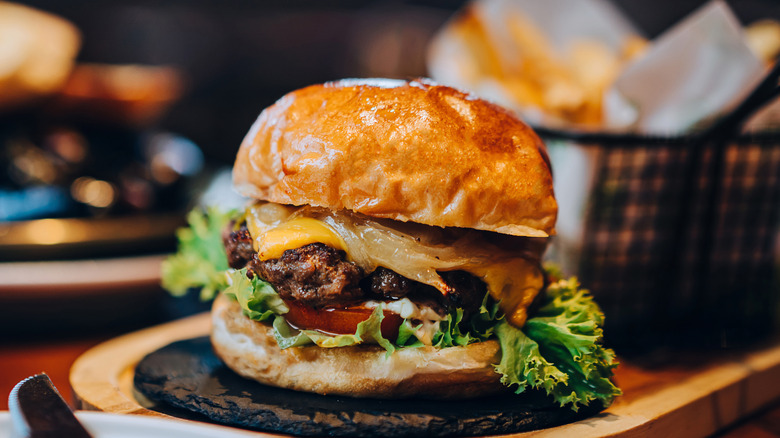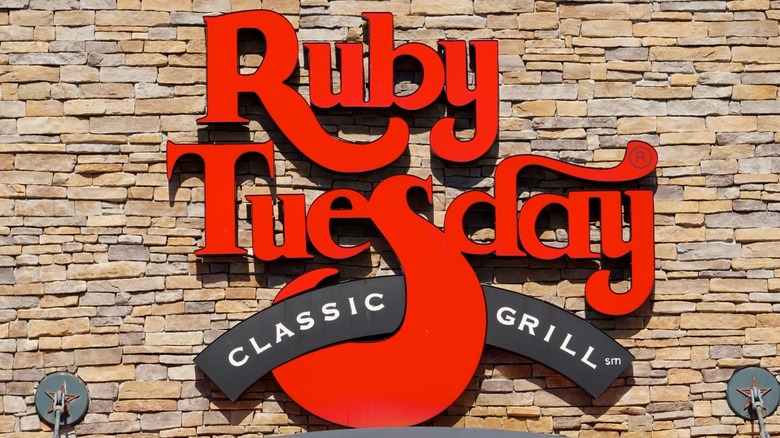The Nostalgic Restaurant Chain Whose Logo Changed For The Worse
People have been ridiculing Cracker Barrel for its disastrously botched logo swap, but it's not the first restaurant chain to draw the ire of longtime regulars after a poorly conceived redesign. (For the record, Cracker Barrel ditched its new logo after fierce customer backlash.) While one could argue that there are plenty of vintage restaurant logos that deserve a comeback, customers generally come around to accepting change. Yet, when Ruby Tuesday gave its iconic emblem a facelift, it alienated fans of the restaurant at the worst possible time.
The original logo oozed charisma, featuring an extended, flashy tail on the "R" and a flamboyantly stylized "S" as the centerpiece of the design. It conveyed the message that the restaurant was a fun place to grab cheap eats and drinks. Yet, much like Cracker Barrel's branding misstep, the chain polished it up by changing the font, creating a cleaner, more uniform layout in 2006. Ruby Tuesday's new logo was sleek, but all of its charm and personality were gone — and customers weren't happy.
The event could have been chalked up to a minor bump in the road, had the chain not already been dealing with declining sales. Meant to attract new customers to a revamped restaurant featuring a classier environment, the rebrand instead served as an amplification of the failures the company was experiencing at the time.
Ruby Tuesday's logo change highlighted its failures
Ruby Tuesday's logo switch was part of a larger plan to modify the menu and refresh its image. Instead of focusing on the chain's affordability, it aimed to entice folks with upscale cuisine served in a swanky atmosphere. Unfortunately, the change coincided with the Great Recession of the 2000s. With competitors taking action to make their menus more budget-friendly, sales continued to drop at Ruby Tuesday as the restaurant spiraled into irrelevance.
The chain was already facing economic challenges, and its merry-go-round approach to regularly hiring and firing CEO's didn't help matters. After the original founder and CEO, Sandy Beall, stepped away from the restaurant in 2012, the company witnessed five CEOs in as many years attempt to right the ship without success. Ruby Tuesday seemed adrift at sea, unsure which direction it wanted to go as it bought and sold stakes in various dining concepts under a corporate umbrella. The company was hemorrhaging cash, and as a result, it shuttered restaurant locations across the country.
Once boasting nearly 850 locations, it dwindled to less than 300 in 2020. That year, the chain filed for Chapter 11 bankruptcy in the hopes that it might be able to consolidate its debt and save itself from completely going under. Ruby Tuesday hasn't thrown in the towel just yet, but it has joined the ranks of once-popular restaurants that are barely hanging on. The chain's ill-timed logo swap wasn't solely responsible for its financial woes, but it added to the troubles that have continued to plague the business ever since.

